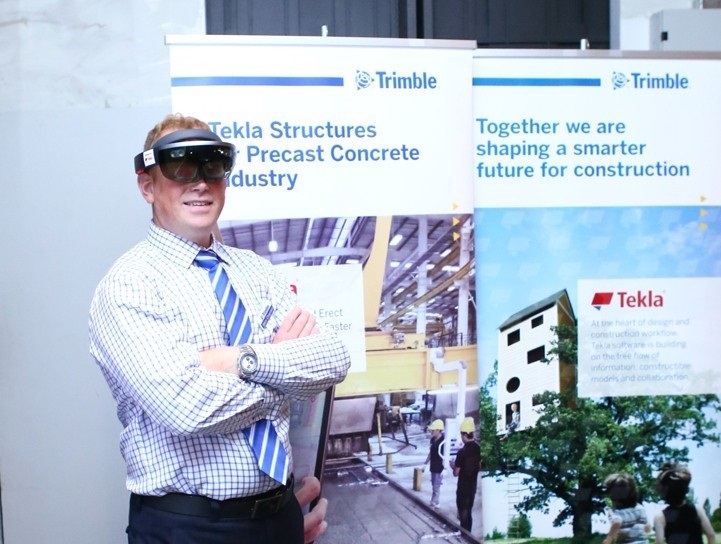As part of the 11th Malaysia Plan, the government intends to propel the construction industry forward to meet market demands and put Malaysia in the headway towards Vision 2020. One fundamental way is through increasing technology adoption and modernising engineering and construction methods.
In line with the government’s efforts, Trimble shares how the latest technology in its offering, that of a HoloLens, can be used in shaping and transforming the future of architecture, engineering and construction, what it coins the “AEC” industry.
Headquartered in Silicon Valley, Trimble was founded in 1978 by an ex-Hewlett Packard engineer, Charlie Trimble. The organisation’s roots were firmly planted in global positioning systems. Trimble amplified its organic product development with strategic acquisitions along the years in order to bring the latest positioning technologies to the global stage.

No less, in 2011, Trimble completed the acquisition of Finnish company Tekla, a leading provider of Building Information Modelling (BIM) software. The integration of Tekla’s BIM software solutions with Trimble’s building construction estimating, project management and BIM-to-field solutions was a game-changer of sorts. With this, there was the convergence of Trimble geospatial technologies whereby data is migrated into intelligent feeds for better organisational decision-making.
Trimble is now able to reach out to segments from agriculture, heavy works construction and infrastructure to building design, transportation and logistics. Rebranding Tekla to Trimble strengthened the Trimble portfolio and enabled Trimble to provide a very compelling set of productivity solutions for the AEC industry. “Transforming the Way the World Works” is Trimble’s chant phrase.
HoloLens technology
In light of that, Trimble teamed up with Microsoft in 2015 to develop a hololens using Microsoft holographic technology, which aims to bring BIM out of the computer screen onto the real construction site. The jointly developed proof of concept product is branded “Microsoft HoloLens”. Trimble terms it a “Reality Virtuality Continuum” where mixed reality technology blends real-world objects with digital content, interactively, and in real-time.
Microsoft HoloLens is a wearable head-mounted, wireless, holographic computer that enables high-definition holograms to integrate with one’s world. Think Pokemon GO superimposed onto a construction site. The device features a see-through, holographic display and advanced sensors that map the physical environment. It allows users to place and interact with 3D holograms in the physical environment.
The construction industry is spatial, by definition. The last few years’ transition from 2D documents to BIM was a natural evolution, which improved communication and coordination. Tekla Structures’ BIM solution is widely used today for its detailed design and fabrication capabilities, but still, the interaction with the volumetric data is being done on 2D screens.
However, now with HoloLens technology, this will help people to efficiently interpret physical and digital information, and the spatial relations between them. In the context of the construction industry, this is the phase in which digital and real content co-exist, where architectural design collides with reality, and where construction teams transform digital content into physical objects.
Seeing the model on a holographic device could allow one to easily and reliably compare existing reality to virtual reality, for example a detailed information-rich model, in real time and in 3D. The engineer or contractor would know instantly if the two matched and what adjustments were needed.
Interpretation errors have always been a challenge during design and construction stages. This often resulted in poor quality, cost overruns and schedule delays. This could be a thing of the past with the HoloLens technology.
The Microsoft Hololens device has been made available to selected developers and business customers in USA and Canada, with each kit costing US$3000 each. No timeline has been set for the roll-out in this part of the world as yet. However, that is not necessarily a bad thing as currently, this version of the HoloLens is considered, at the testing & improvisation stage. The device’s level-of-detail capability and 3-second time lag will surely be assuaged in the future commercially available versions.
We all sure look forward to seeing this “Ironman helmet” technology making a significant impact in the AEC industry in Asia in time to come!








